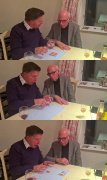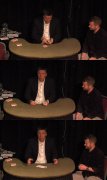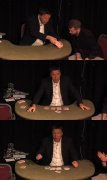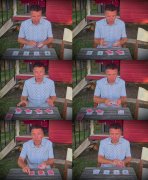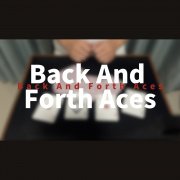Cards in Magic & Mentalism
Subtopics
Self-Working or Sleightless DIY Playing Cards Moves & Techniques ACAAN Stacks Marked Gaffed Rising & Levitating Manipulation & XCM Svengali Torn and Restored LinkingAuthors
Products
6 Stunning Card Tricks
Ian Adair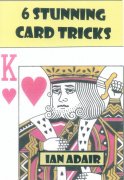
Snow Drift Deck: A stunning card routine where all the cards in a deck become blank!
Origami Card Discovery: A strip of folded paper displays a prediction of a card which a spectator will select. It's wrong! The image magically changes and the prediction is 100% correct.
Simplicity Card to Wallet: No special wallets used, yet the same effect is accomplished using a very simple method.
Peek-A-Boo!: A joker card which has a corner missing is used to locate a chosen card within a shuffled deck.
Split Down the Middle: Ian's version of the classic 'Split Deck'. Deck has already been...
Tracking Four Cards
Miku W.This is a trick for quickly locating four selections.
During an overhand shuffle, four cards are freely chosen, with no control involved. The spectators clearly see the cards lost in four different positions. Yet in the end, the magician can still locate all four selections with precision. For the full routine and effect, see the video demonstration.
- No force
- No gimmick
- No memory work
- No peeking
1st edition 2025, video 6:42.
Italian Lecture
Jon Racherbaumer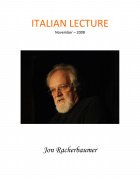
Jon Racherbaumer lectured around the globe. These are the lecture notes for a lecture he gave in Italy in 2008.
- Rules of the Game / Max Maven
- Snap-Slap Transpo / Marc Serin
- Supra-Gemini / John Guastaferro
- Mathematician - Psychic - Magician
- Suit Yourself / Henry Evans
- Unambiguous Discernment / Edward Marlo
- Humma-Humma-Hummer / Lewis Jones and Jack Avis
- In the Nick of Time / John Gustaferro
- The Last Game / David Britland
- Dunbury Lie Speller
1st edition 2008, PDF 28 pages.
Fifty New Card Tricks
Howard Thurston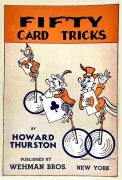
Includes a comprehensive description of the continuous front and back hand palm with cards, and the sensational new rising card trick.
- CHAPTER I. A Few Incidents in the Life of Howard Thurston
- CHAPTER II. Indispensable Sleights
- THE PASS
- THE FORCE
- THE CHANGE
- THE ORDINARY PALM
- CHAPTER III. The Continuous Front and Back Hand-Palm and Tricks in Connection Therewith
- THE DISAPPEARANCE OF FIVE CARDS ONE AT A TIME
- THE PRODUCTION OF CARDS ONE AT A TIME AT THE FINGER-TIPS FROM THE BACK-HAND PALM
- THE PRODUCTION OF CARDS AT THE FINGER-TIPS FROM THE ORDINARY PALM
- PASSING A CARD THROUGH...
Double Sandwich
Stoyan D.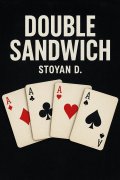
This double sandwich is based on Dragnet by Jack Birnman. I added two moves that replace ATFUS with a better move. I would even say that it only works on this sandwich. It's just my imagination. I've never seen anyone do what I do. The last move is even better, and so I distribute the aces with the spectator's cards to be in certain places, so that they are different places not next to each other. And at the beginning, if you notice, I don't arrange the cards red-black-black-red, like in every version.
Inspired from Dragnet by Jack Birnman, Tengard by Paul Gordon, New jack...
Double Serch
Miku W.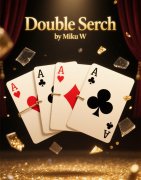
The magician begins by taking out four Aces. The spectator selects one red card and one black card, which are then returned to the deck and shuffled. The spectator is asked to cut the deck randomly into four packets. The four Aces are placed on top of each packet. The packets are reassembled. When the deck is spread, the four Aces not only gather together, but the red Aces sandwich the spectator’s red selection, and the black Aces sandwich the spectator’s black selection.
- No force
- No gimmick
- Impromptu performance
1st edition 2025, video 5:08
Three Stewart Judah Card Classics
Ian Baxter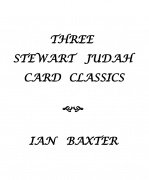
John Northern Hilliard, in his classic text Greater Magic, made this poignant observation: "Stewart Judah looms extravagantly in the field of magic. I would rather see him do a card trick than go to a convention."
Another famous identity, Jay Marshall, editor of The New Phoenix and one of the twentieth century's most celebrated magic dealers, was equally laudatory: "Stewart Judah is the world's greatest magician!"
Similar tributes about Judah have flowed continuously over the years - perhaps helped along by his astonishing book [lp=758790 The Magic...
CAT 2 FAT: Cut and Turn to Find Any Thought
Biagio Fasano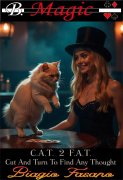
A deck of cards is shuffled and turned over several times, responding to various "Stop!" commands given by a spectator, to determine a number and the thought of a card which is magically found in the deck. But the miracle will happen a second time, when everything will be interpreted in reverse!
The title refers to a semi-automatic effect with cards, in which the magician invites a spectator to say three different stops at three different points in the deck. For each of them, turn the deck over at the exact point of the 'Stop' and, at the end, turn the whole deck over to extract the first...
Marlo's Rebound Aces
Jon Racherbaumer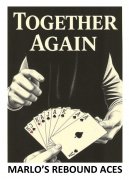
In the early days of the Phoenix, issue number 12 to be exact, Lu Brent had an intriguing idea in an Ace effect titled "Together Again." In the effect, he was able to show each and every Ace being replaced into the deck, except for a chosen packet that contained, of course, the chosen Ace. At the finish, the four Aces were in the chosen pile. It used duplicate Aces. Marlo eliminated the need for duplicate aces.
- Together Again / Lu Brent
- Hindu Aces / Arthur Buckley
- Methods of Apparently Losing the Aces
- Sudden Aces
- Convincing Aces
1st edition 2025, PDF...
4 Effects
Dustin Marks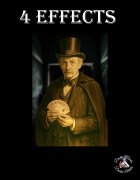
4 Brand New Effects. I have not published these effects anywhere.
- Structured Procedure and Setup: Each effect is meticulously detailed with specific setups and methods. Most setups are minimal.
- Audience Management & Psychological Play: The magician's actions, patter, and even the "illogical" elements are designed to manage spectator perception and prevent suspicion.
- Apparent Fairness: Despite the deception, the goal is often to make the trick appear as if "magic was real," minimizing suspicious movements.
- Building Impossibility: Effects are structured to eliminate perceived solutions,...
Pre-Vision of a Card at a Number
Biagio Fasano
A number, generated by the sum of the values of 5 randomly selected cards, will magically reveal the exact card predicted by the magician from the beginning!
The title refers to a semi-automatic card effect, in which the magician shuffles the deck and gives it to a spectator to cut and complete. He then hands him a pair of dice (he can also just ask him to imagine them) and, before throwing them, places a card face down on the table, announcing that it is his Pre-Vision of what will happen shortly. Once they verified the score obtained from the two dice, he stacks that exact number of cards...
10: you are magic No. 10
Father Cyprian
- Foreword
- Doctor Jekyll And Ms. Hyde
- Invisodex
- Aces - Chicago Style
- Watch Your Aces
- Watch Your Aces II
- Switchblade Aces
- Ring In Nest Of Boxes
- Ring In Nest Of Boxes - Plot
- Disposition Of Props And Method
- Card In Wallet - Props
- Disposition Of Props
- The Big Little Signed Card In The Wallet Scam
- Becker And Cyprian
- Bank Deposit Slip Prediction
- Match Box
- Addenda
1st edition 1983, 31 pages; PDF 34 pages.
Shocking Coloured Card at Number
Biagio Fasano
A series of cards, taken from four piles decided at the "Stop," are progressively eliminated, until only one pair remains to decide both a card and a number. Not only will that card be found in the deck at the number, but all the cards stacked under that pair will result magically divided by color!
Shocking Coloured Card at Number is a semi-automatic effect with cards, in which the magician shuffles the deck, then deals the cards into four separate piles, alternating between a spectator's "STOPS" and his own. Having collected the piles, he will gradually eliminate their cards until he...
Bammo Dreamcatcher
Bob Farmer
After the spectator's selection is lost in the cards (it really is), the spectator imagines (as if in a dream) his card in various scenarios (e.g., as a mirage in the desert, as a reflection in a mirror, on top of Mount Everest, etc.).
Neither the selection nor the scenarios could be known to the magician using his five senses. And the magician could not know where in the cards the selection might reside.
Using his sixth sense, the magician reads the spectator's mind and identifies each scenario the spectator has thought of.
But the chosen card's identity and its location are still...
Perfect Match
Biagio Fasano
A card, generated by pure chance, together with the precise will of a spectator, after the magician, using a special shuffle method to progressively eliminate pairs, has excluded every other card from the deck, it will be magically found.
This is a semi-automatic card effect, in which a spectator cuts the deck, shuffled by the magician, and begins to turn the cards over one by one, stopping when he wants. From that point on, the first two cards can indicate the value and suit (or vice versa, at his discretion) of a completely random card. Taking the deck back, and showing that it is neither...
Flying Saucers
George Pierce
Compelling evidence of other-worldly existence as demonstrated with pasteboards.
I never believed in flying saucers ... that is, not until that fateful night in 2003. You may remember it. That's the night the power went out from the northeast to the midwest, and even left parts of Canada in the dark. Sunspots? Tree branches? Human error? You might think you know the cause, but I know. Because I was there when it all went down.
And so begins this extraordinary card miracle that'll have your spectators believing in UFOs and extra-terrestrials.
A borrowed deck is shuffled and a spectator...
The Mystery of the Cards and the Dice
Dustin Marks
Effect: The spectator shuffles and cuts a regular deck, then chooses four cards, placing them under the table. After he picks one card by its position (top card, second card, third card, or bottom card) and moves the cards by an imaginary roll of the dice, the magician - without seeing or touching the cards - reveals the chosen card's identity.
If you have a client or friend you want to impress, this is the effect, plus you give them a souvenir.
- Two Methods: one method, no setup, totally impromptu
- Two presentations: one presentation the spectator chooses the card with his name on it. ...
Sea Scams
Jon Racherbaumer
Memes to quicken.
- Swoggled And Boggled / Charles McFarland
- Beyond Fabulous / John Bannon
- Cogent Triumph / Bill Goodwin & Larry Jennings
- The Spectator Works Harder To Triumph / Jon Racherbaumer & Peter Duffie
- Trait Secrets / John Bannon
- Strout Fellow / Allain Slaight & Cushing Strout & Stewart James
- One-Kai / Marc Serin
- Hull-Scam / R. W. Hull & Jon Racherbaumer
- The Elusive Jacks / Edward Marlo
- Last-Minute Departure / Jon Racherbaumer
- Post-Graduate 21-Card Trick / Edward Marlo
- Hefty Oil & Water / Larry Jennings
- Definitive...
Three Different Card Tricks
Cristian Vidrascu
Cristian presents three very different card tricks. However, they happen to share the same easy method, allowing the performer to focus entirely on the presentation.
The three routines play for very different audiences, in vastly different environments. They include:
- a light-hearted, highly visible card trick which can be performed standing in front of the audience
- a close-up "bar betcha" trick suitable for any close-up performance (planned or impromptu)
- a reputation-building stand-up mental magic (or mentalism) routine
His line of thinking can inspire magicians to increase their...
Ping-Pong Predictions
Raphaël Czaja
A prediction is lying on the table. The magician asks a spectator to cut a shuffled deck in three parts and to pile them up. Then, he removes the Jokers as he explains that he and the spectator are going to choose a card through an elimination procedure. To do so, he deals the cards in two piles and asks the spectator to choose one. They are left with one half of the deck. The magician deals the cards again and chooses a pile this time. They are now left with a quarter of the deck. The procedure is repeated a couple of times again (once with the spectator choosing a pile and once with the...
Aces of Certainty
Dustin Marks
Spectator shuffles the deck. The magician immediately produces two of the aces. Spectator shuffles again. The spectator cuts to an ace. The final ace is found under impossible conditions.
This is not another cut the aces where the magician shows off his skill. The Gilbreath Principle meets corner short cards.
- Easy to do
- The spectator shuffles the deck numerous times
- Minimal sleight of hand
- 5-second reset
- No duplicate aces
- No double facers
- No rough and smooth
- A very deceptive force that could become your favorite
1st edition 2025, PDF 11 pages.
Picked-Up Pieces and Borrowed Bits
Jon Racherbaumer
Oddities and weirdness to show uncle Ezra, cousin Ozzie, and the boys in the band.
- Simple-Simon Copper-Silver / Edward Marlo: An English penny and an American half-dollar are examined by a spectator and then the magician performs several transpositions. Afterwards, the coins are returned to the spectator for inspection.
- Short Hop / Mark Jenest & Jamy Ian Swiss: A Hopping Half version that can be done with genuine coins for the short-attention-span spectator.
- Curse Of Nine
- Knotty Feat
- Tit-Tat-Toe / Martin Gardner & Costello: A large tit-tat-toe board is drawn on a sheet of paper. The magician and spectator proceed to play a...
The Grasshoppers
Aldo Colombini
A matrix effect with playing cards.
[Also available as a video download.
Without a doubt, this "matrix" with playing cards created by Aldo is truly special. A splendid opening routine and a surprising ending.
The classic trick of four coins that gather under a card is presented here with playing cards that are found under a jumbo card. The manipulations are really simple; they should already belong to the repertoire of every magician. In a close-up magic program, this could be the only card trick to be presented.
Effect: The A, 2, 3 and 4 of Diamonds are placed on the table, in a square formation. The cards are covered...
Blackjack Double Deception
Dustin Marks
The two black aces visually change places with the two red aces and then instantly change into two Blackjacks.
- Great Opener: A lot of visual magic happens in 30 seconds
- Simplicity: Only four cards are used; easy to do; no table is needed; packs very small
- Impact: Surprise ending
- Practicality: 2-second reset; perfect for table hopping
- Spectator Engagement: The spectator just watches, no picking a card, no remembering anything; just visual magic
- One Simple Move: The Flustration Count
1st edition 2025, PDF 11 pages.
A Very Odd Trick
George Ernest Arrowsmith
This is really from start to finish an odd magic card trick. In A Very Odd Trick, two Jokers—one black and white, the other colorful—become the centerpiece of an impossible prediction. Here’s what your audience will see:
The magician makes two secret predictions and places them face down. A deck of cards is freely shown. It is ribbon spread on the table so the audience can clearly see that it is no other than a normal deck of shuffled cards. A spectator freely names an odd number, and the card at that number is put on the table (it is really a free choice. Absolutely no force. The...
Another Three Daley Deceits
Ian Baxter
December 1932 and The Sphinx magazine carries a full-page advert for Dai Vernon's manuscript Five Close-Up Problems. Without a doubt, Follow The Leader engenders the most attention out of the five, with card men quickly adding this one to their repertoire. Not surprisingly, Doctor Jacob Daley latches on to this timely classic, eventually releasing his own handling in Bruce Elliott's magazine The Phoenix in 1951.
And now, decades on, Ian Baxter releases his new manuscript Another Three Daley Deceits - following on from Three Daley Deceits published in April 2024. This one includes Baxter's handling of Daley's Delight - Jacob Daley's version of Follow The Leader....
Open Prediction 2025
Pablo Amirá
"I checked out the Open Prediction 2025 and just wanted to say that's really cool. It's the exact type of card effects I like. It's just a genius method, so strong and direct, I love it. The fact it's so approachable for any skill level is great too." - Matt Overd
One of my favorite plots in card mentalism is the "Open Prediction". Many different scripts and presentations are possible with this classic from Paul Curry.
In this new method, we follow these practical conditions:
- Shuffled deck (even an incomplete one)
- A card is named as the "Open Prediction"
- Cards are dealt face down in your open hand...
The Ultimate Three Pile Location
Unnamed Magician
I have already published multiple three pile location effects, such as Three Pile Location: On Steroids, Three Pile Location: On Cocaine and Three Pile Location: On Meth. In this ebook, I am publishing another three-pile location effect, except this one is, in my opinion, the strongest one. I think it's more fooling than the aforementioned three. Hence why I decided to call it The Ultimate Three Pile Location.
However, for full disclosure (and without exposing the method), I will say that you will likely be unable to perform this. So if you buy this PDF, you will be doing so just to learn the method (not to perform the effect). That's not to say you can't ever perform the effect....




















